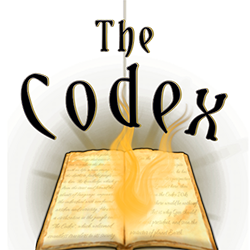The official discord link if you wish to join the discord: https://discord.gg/j5RKwCvAFu
The background art comes from Cherylann1960.
Reactions: Difference between revisions
m |
m |
||
| Line 9: | Line 9: | ||
|- | |- | ||
|style="background:black; border-radius:3.25px;"|'''Standards''' | |style="background:black; border-radius:3.25px;"|'''Standards''' | ||
|[[Transcendence]] - [[Creation vs Destruction]] - [[Outlier]] - [[Ludonarrative Dissonance]] - [[Inconsistency]] - [[Plot-Induced Stupidity]] - [[Reality - Fiction Interaction]] - [[Powerscaling]] - [[Black Hole]] - [[Wormhole]] - [[Stabilization Feats]] - [[Merging Feats]] - [[Standard Battle Assumptions]] - [[One-Shot]] - [[Speed Blitz]] - [[ | |[[Transcendence]] - [[Creation vs Destruction]] - [[Outlier]] - [[Ludonarrative Dissonance]] - [[Inconsistency]] - [[Plot-Induced Stupidity]] - [[Reality - Fiction Interaction]] - [[Powerscaling]] - [[Black Hole]] - [[Wormhole]] - [[Stabilization Feats]] - [[Merging Feats]] - [[Embodying Feats]] - [[Data World Standards]] - [[Dream World Standards]] - [[Standard Battle Assumptions]] - [[One-Shot]] - [[Speed Blitz]] - [[Penetration Damage]] - [[Death of the Author]] - [[Versus Threads]] - [[Information Pages]] - [[Light Dodging Feats]] - [[Lightning Standards]] - [[Timeless Void Standards]] | ||
|- | |- | ||
|style="background:black; border-radius:3.25px;"|'''Formats''' | |style="background:black; border-radius:3.25px;"|'''Formats''' | ||
Revision as of 14:49, 4 June 2023

Reactions
Reactions may be defined simply as the time between a stimulus and a response. Three basic reaction time paradigms have been described:
- 1. Simple reaction time has a single stimulus and a single predefined response.
- 2. Recognition reaction time has several false stimuli mixed with one correct stimulus prompting the response.
- 3. Choice reaction time involves multiple stimuli and differing responses for each stimulus. Serial reaction time is a combination of recognition and choice reaction time, where the stimulus is a repeating sequence that the subject must learn to predict and then to respond in a prescribed fashion.
An example of simple reaction time would be the time from a buzzing sound to moving a finger. Adding false chime or ring sounds would convert the model to recognition reaction time, while creating different responses for the chime or other ring sounds would convert the model to a measurement of choice reaction time.
Reaction Tiers for Reaction Timeframes Only
Below Average perception: any real number higher than 2e-1 seconds
Normal Human perception: 2e-1-1.30e-1 seconds
Athletic Human perception: 1.30e-1-9.97e-2 seconds
Peak Human perception: 9.97e-2-8.05e-2 seconds
Superhuman perception: 8.05e-2-6.48e-3 seconds
Superhuman+ perception: 6.48e-3-3.64e-3 seconds
Transonic perception: 3.64e-3-2.78e-3 seconds
Transonic+ perception: 2.78e-3-2.24e-3 seconds
Supersonic perception: 2.24e-3-9.26e-4 seconds
Supersonic+ perception: 9.26e-4-5.83e-4 seconds
Hypersonic perception: 5.83e-4-3.89e-4 seconds
Hypersonic+ perception: 3.89e-4-2.92e-4 seconds
High Hypersonic perception: 2.92e-4-1.67e-4 seconds
High Hypersonic+ perception: 1.67e-4-1.17e-4 seconds
Massively Hypersonic perception: 1.17e-4-6.67e-8 seconds
Massively Hypersonic+ perception: 6.67e-8-3.34e-8 seconds
Relativistic perception: 3.34e-8-6.67e-9 seconds
Relativistic+ perception: 6.67e-9-3.34e-9 seconds
Speed of Light perception: 3.34e-9 seconds
FTL perception: 3.34e-9-2.386e-17 seconds
FTL+ perception: 2.386e-17-4.17e-23 seconds
Massively FTL perception: 4.17e-23-1e-44 seconds
Massively FTL+ perception: any real number less than 1e-44 seconds
Discussions (Link For Mobile Users):
| Discussion threads involving Reactions |
